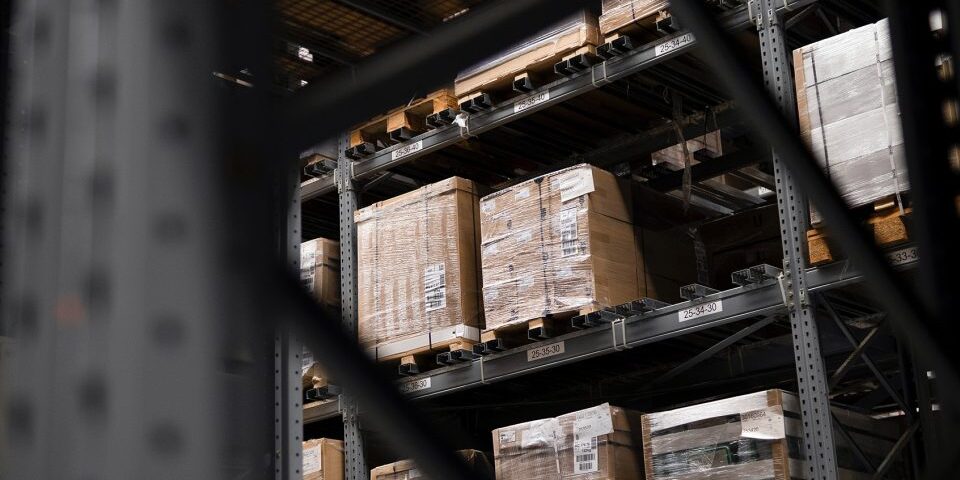
The rising fuel prices and their impact on different Sectors
13 Settembre 2023
The Impact of Transport Costs on Prices and Inflation
10 Ottobre 2023When it comes to international trade and the storage of goods, two terms that often come up are “customs warehouse” and “tax warehouse.” While these may sound similar, they serve distinct purposes and have different implications for businesses engaged in import and export activities. Italy, with its thriving import-export sector, relies on well-structured and organized customs and tax warehouse services to ensure smooth operations, from importing raw materials to exporting finished products. Let’s understand the key differences and highlight the respective benefits.
Customs Warehouse: What Is It?
A customs warehouse is a secured facility authorized by a country’s customs authority where imported goods can be stored without payment of import duties and taxes. The primary purpose of a customs warehouse is to facilitate international trade by allowing businesses to defer their customs duties and taxes until the goods are released for domestic consumption or re-exported. In the European Union (EU), it allows businesses to store non-EU goods for a certain period while benefiting from a suspensive economic regime. In simple terms, it enables the storage of products originating from non-EU countries without paying import duties.
A customs warehouse can be either public or private. In the case of a public warehouse, there is direct control by the public authority, while in a private warehouse, control is indirect. When goods are stored in a customs warehouse, import duties are suspended, allowing businesses to sell these goods when favorable market conditions arise. This service also provides the advantage of having products readily available, with duties and value-added tax (VAT) payable only when the goods are actually introduced to the market.
Key Features of Customs Warehouses:
- Duty and Tax Deferral: One of the primary advantages of a customs warehouse is that it allows importers to store their goods in a duty-free environment until they are ready to be sold in the domestic market or exported. This deferral of duties and taxes can provide significant cash flow benefits.
- Controlled Environment: Customs warehouses are closely monitored and regulated by the customs authorities to ensure the integrity of the goods stored there. Security measures and inventory control are strict to prevent any unauthorized access or tampering.
- Limited Access: Access to customs warehouses is typically restricted to authorized personnel, such as customs officials, warehouse operators, and the owners of the stored goods.
- Record Keeping: Thorough record-keeping and reporting are essential in customs warehouses to track the movement and status of goods. This transparency helps ensure compliance with customs regulations.
- Time Limits: Most countries impose time limits on how long goods can be stored in a customs warehouse. If the goods exceed the allowable storage period, they may be subject to penalties or confiscation
Tax Warehouse: A Crucial Component for Fiscal Management
A tax warehouse is a facility where excisable goods can be stored, processed, or manipulated without payment of excise duties. Tax warehouses are often used by businesses involved in the production, distribution, and storage of these excisable goods. Effective fiscal management of goods movement, along with a comprehensive review of supply and sales flows, offers economic operators various efficiencies and tangible savings. Both the tax warehouse and tax deposit institutions are essential pieces to reduce the tax burden and address issues related to the use of highly efficient logistics platforms, which may not always fully comply with strict tax regulations.
Introduction of Goods into Tax Deposit
All types of goods con be admitted to the tax deposit regime, including national ones, allowing a wide range of transactions to benefit from tax suspension.
It’s a great opportunity when goods undergo multiple transactions or are destined for export or sale in another EU member state. However, it’s essential to understand the delicate role of the depositary in ensuring the correct application of the regime.
Goods Extraction
Extraction of goods from a tax deposit comes with the obligation of the direct payment of tax to the tax authorities. The method of tax payment varies depending on the origin of the goods introduced into the deposit.
For goods introduced through an intra-EU purchase, the entity extracting the goods must self-invoice and pay the tax via reverse charge. In the case of goods previously placed in free circulation and then introduced into the tax deposit, the entity extracting the goods must self-invoice, provide adequate collateral, and communicate the necessary tax-related information to the tax authorities. This entity is also responsible for any customs duties, penalties, or fines.
For all other cases, the entity extracting the goods is responsible for both paying the tax and communicating the relevant information to the tax authorities. This payment must be made by the 16th day of the following month, and it cannot be offset through horizontal compensation.
An exception to direct payment exists for regular exporters who can choose to extract goods from the tax deposit without immediate tax payment by using the tax credit mechanism known as the “plafond.”
Responsibilities of the Depositary and Penalties
It’s important to pay attention to the obligations and responsibilities on depositaries, which supplement existing requirements. Failure to pay the tax results in penalties, with the depositary being jointly responsible with the entity extracting the goods. In cases where the entity extracting the goods pays tax using the tax credit mechanism without having the necessary funds, only the extracting entity is liable for any penalties.
Importers who present guarantees to the customs authorities also require the depositary to communicate the extraction data to customs. Non-compliance with these obligations could lead to the revocation of the depositary’s authorization.
Tax Deposit Opportunities for National Goods
Tax deposit offers opportunities for managing national goods more efficiently. For example, an entity can introduce goods into the deposit, paying tax on the raw materials, and then extract these goods in stages as needed for production. This approach offers significant cash flow benefits by deferring the tax payment until the final product is sold, which can be months or even years later.
Furthermore, when exporting goods to EU member states, the tax deposit regime can provide cash flow advantages. Instead of paying the tax immediately upon export, an entity can use the tax credit mechanism to offset the tax due, potentially resulting in a tax-free export.
The opportunities for the import-export sector
Understanding the differences between customs warehouses and tax warehouses is vital for businesses involved in international trade. While customs warehouses focus on suspending import duties for non-EU goods, tax warehouses provide opportunities for efficient fiscal management of goods, including national ones. When deciding which warehousing solution to use, businesses must consider their specific needs, the type of goods involved, and their intended use. By doing so, they can make informed choices that optimize their operations, reduce costs, and enhance their competitiveness in the global market. Italy’s thriving import-export sector can leverage these warehousing options to navigate international trade more effectively and profitably.

Read the other World Shipping Focus News:
Post 2M. perspectives in container shipping
India as a global hub for logistics and manufacturing
The 2035 ban to endothermic engines in Europe and how it affects Italy’s economy and export
The value of Cosmetic industry in Italy and the export forecast for 2023
The New Wave of Container Ships: Bigger and More Sustainable?
The rise and fall of the new Silk Road
Revolutionizing Storage and Logistics: VLMs and VSWs
The Evolution and Future of Space Logistics: Unlocking the Potential of Outer Space
The 13 Commercial Water Canals: Opportunities and Threats
Decarbonizing Transports: A Global Imperative
Sources:
https://www.studiosantacroce.eu/Contenuti/Articoli/Articolo/1439
https://taxation-customs.ec.europa.eu/customs-warehousing_en


